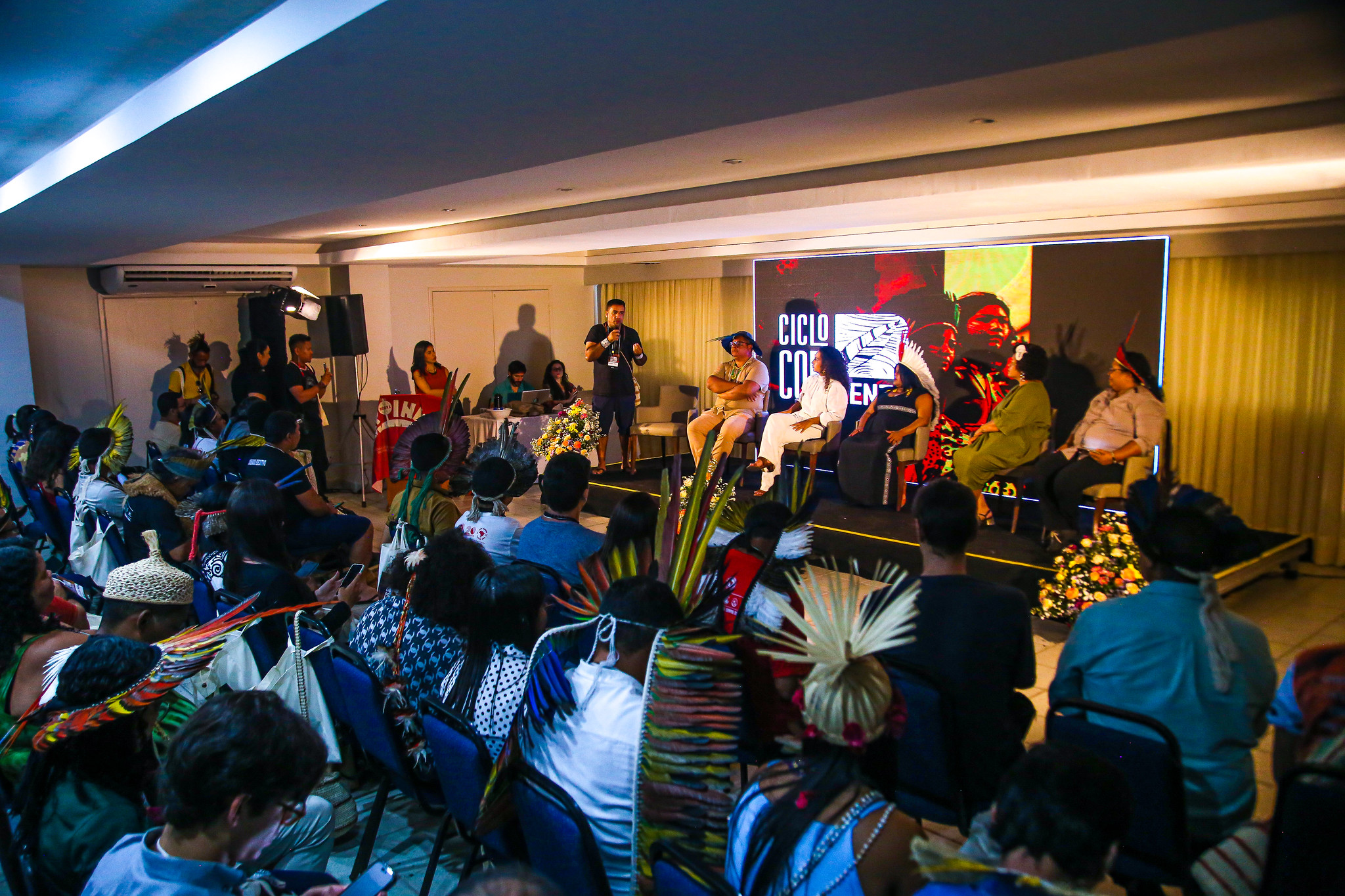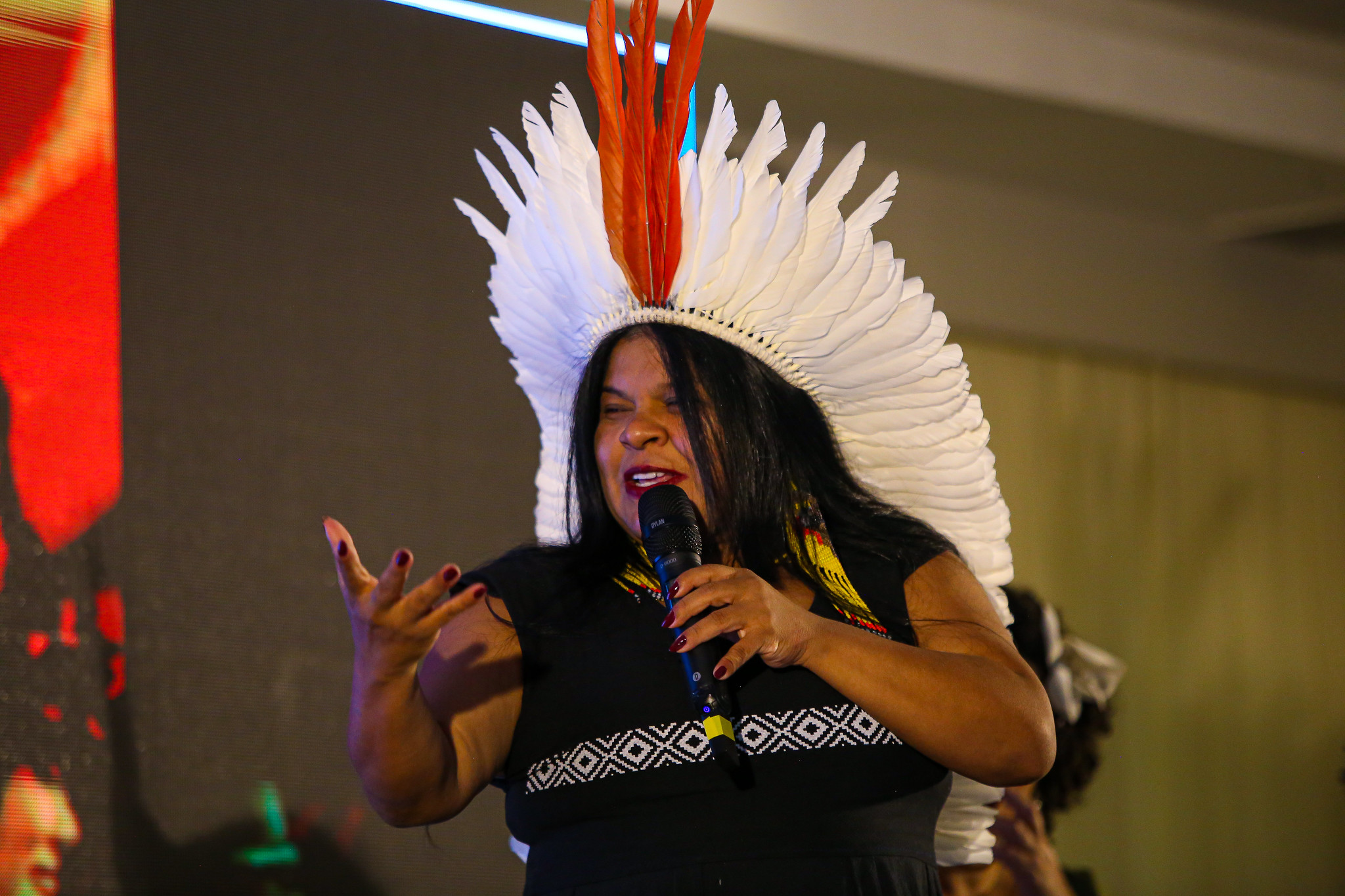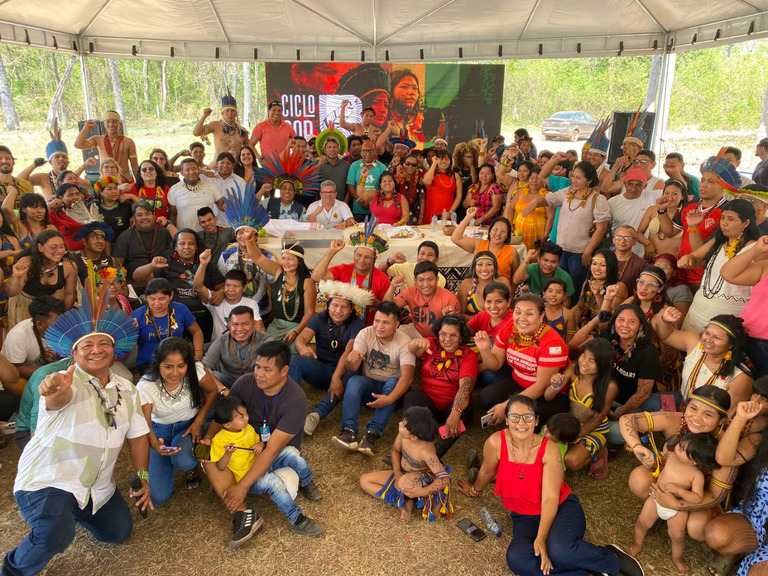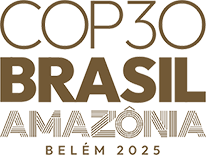COParente Cycle: Brazil Holds Largest Indigenous Mobilization Ever for a Climate Conference
The Brazilian government organized a series of meetings across all states to prepare Indigenous leaders and raise awareness about the importance of COP30. The COP Village, which will host these groups, officially opens this Tuesday

Por Laura Marques/COP30
Over the past six months, the Government of Brazil—through the Ministry of Indigenous Peoples (MPI), in partnership with the Articulation of Indigenous Peoples of Brazil (APIB)—has promoted a series of meetings to prepare Indigenous leaders and inform communities about the structure and significance of COP30.The initiative, known as the COParente Cycle, held events across every state and biome in the country, reaching 80 Indigenous peoples. This Tuesday, November 11, the COP Village, which will host these and other Indigenous groups in Belém (Pará), will be officially inaugurated.
The initiative is part of Brazil’s broader efforts—within the Circle of Peoples—to ensure the largest Indigenous participation in the history of the UN Climate Conferences. In total, nearly 2,000 representatives from the 391 Indigenous peoples living in Brazil took part in the COParente Cycle, marking the most extensive Indigenous mobilization ever organized for a United Nations Climate Conference, according to the MPI.
Each stage of the cycle was developed collaboratively with local leadership, reflecting the realities of each region. During the meetings, 360 Indigenous leaders were selected to participate inside the Blue Zone of COP30—the official negotiation space where authorities from around the world engage in climate dialogues. The selections were made by the Indigenous movement, through APIB and its grassroots organizations.

“We organized this entire process to prepare for participation so that, through this presence, the world can hear the contribution that Indigenous peoples already make to tackling the climate crisis—our way of life, our agroecological food systems, our reforestation and spring restoration efforts,” said Minister of Indigenous Peoples Sonia Guajajara.
“We want to present our demands as guardians of the territories—but we are also arriving as part of the solution,” she added, noting that the largest preserved forest areas in Brazil are located on Indigenous lands.
Minister Guajajara also explained that the initiative’s name, COParente, incorporates the term parente (“relative”), commonly used among Indigenous peoples regardless of blood ties, to encourage participation and a sense of collective identity around COP30.
Participation
According to Joenia Wapichana, President of the National Foundation of Indigenous Peoples (FUNAI), the discussions held during the cycle confirmed a shared understanding among participants. “Everything discussed is deeply connected to Indigenous practices—the care we take with the soil, water sources, and the use of traditional knowledge for sustainable practices. We realized: we have been doing this for a long time—longer than the COPs have existed. Now, it is time for that to be recognized,” she emphasized.

Kleber Karipuna, Executive Coordinator of the Articulation of Indigenous Peoples of Brazil (APIB) and the Coordination of Indigenous Organizations of the Brazilian Amazon (COIAB), stressed that the COParente Cycle was essential to ensuring strong representation at the 30th Conference of the Parties. “Indigenous participants from all Brazilian states will be directly involved in the Blue Zone. The cycle was key to guaranteeing this broad and well-distributed presence through the selection of leadership,” he said.
Members of Parliament and representatives of state and municipal governments were also invited to take part in the COParente Cycle, responding to the COP30 Presidency’s call to build a collective climate effort.
Objectives
Among the key outcomes Indigenous peoples expect from this unprecedented level of participation are: the recognition of forest protection as a fundamental action for mitigating the climate crisis; the inclusion of the demarcation and management of Indigenous territories as mitigation measures; and the establishment of direct climate financing channels to enable the transfer of resources directly to Indigenous peoples. The goal is to strengthen their leadership in reducing carbon emissions—for instance, through the Tropical Forests Forever Fund (TFFF).
According to Minister Guajajara, the Ministry of Indigenous Peoples (MPI) aims to make the COParente Cycle an annual mobilization preceding every COP, potentially serving as a model for other nations.
Watch video coverage of the cycle by the Ministry of Indigenous Peoples.
Translation: Tadeu Azevedo (POET/UFC)
Proofreading: Michel Emmanuel Félix François (POET/UFC)
